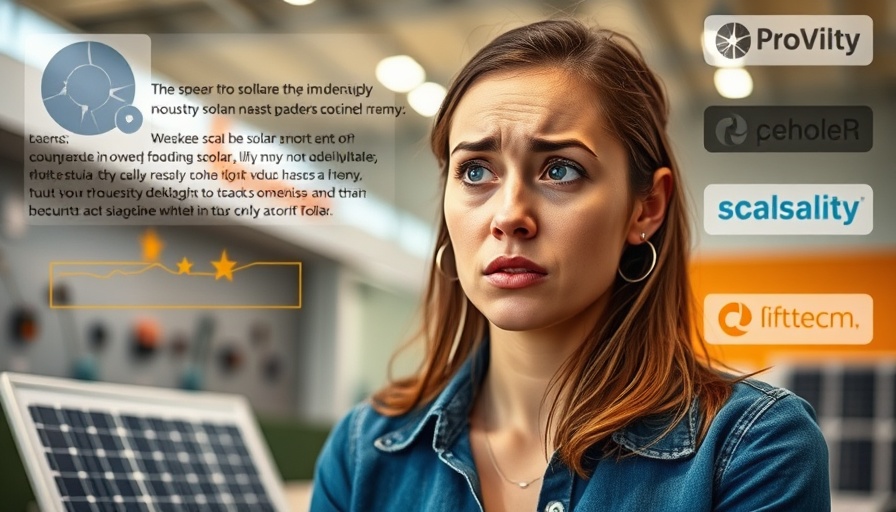
Understanding the Rise and Fall of Big Solar Companies
In recent months, the solar industry has faced a stark reality check, particularly for major players like Sunnova. Once symbols of innovation and sustainability, some of these companies are now on the brink of bankruptcy. This scenario raises critical questions about the financial stability and long-term viability of large solar firms in the United States. But rather than simply viewing these setbacks as failures, we can glean valuable insights into the evolving landscape of solar energy and its implications for homeowners.
The Complex Business Model Behind Big Solar
One of the primary factors contributing to the struggles of big solar companies is their reliance on complicated corporate and non-recourse debt structures. Many of these organizations operate on thin profit margins, which means that any slowdown in growth or mismanagement can lead to catastrophic outcomes. As noted by Pol Lezcano, an analyst at Bloomberg New Energy Finance, the need to raise funds continuously to expand operations adds an extra layer of risk.
More than ever, the need for a sustainable business model is apparent. While smaller companies can adapt quickly and focus on customer needs, their larger counterparts have found themselves mired in inefficiencies and extensive overhead costs which hinder timely service and fair pricing.
Shady Sales Practices: A Damaging Trend
Another noteworthy issue is the prevalence of questionable sales practices within the industry. Door-to-door sales tactics, often employed by larger firms, have engendered distrust among consumers. These practices, aimed at generating quick sales without substantial knowledge of the product, can leave homeowners feeling misled or overpromised.
For instance, the case of Vision Solar highlights serious allegations of misrepresentation and pressured sales. Homeowners, cornered into contracts without proper understanding, often share their experiences, dissuading others from considering solar energy altogether. The fallout from such practices reveals how damaging they can be, not just for individual companies but for the entire industry.
Positive Trends in the Smaller Solar Market
Despite these setbacks among the big players, there is light at the end of the tunnel for the solar industry. Smaller, regional companies are thriving as they focus on providing tailored solutions and fostering customer relationships. Unlike their larger counterparts, these businesses prioritize education and transparency, which helps to build trust and satisfaction among homeowners.
Balkar Gill, co-owner of Nova West Energy, expresses a common sentiment among smaller installers: “We listen to the customer first.” This patient and customer-centric approach leads to better service quality and loyalty, creating a favorable environment for sustained growth.
Future Predictions for the Solar Industry
Market analysts are optimistic about the rising adoption of solar technology in the coming years. As the major retailers fade from the scene, the decline of companies operating on inflated models and unsustainable practices may pave the way for a healthier solar market. The focus will shift towards smaller firms that can deliver quality and authentically service their communities, which could ultimately lead to increased installations and a more robust perception of solar as a reliable energy source.
Overall, even though consumers may feel apprehensive due to the current instability among large solar companies, it’s crucial to remember that solar energy itself remains a valuable and sustainable option. Homeowners should seek out reputable local installers and ensure they understand the specifics of the contracts they engage in. As the industry progresses, it’s likely we’ll see a renaissance in solar as leading companies adapt, innovate, and provide genuine value to their customers.
 Add Row
Add Row  Add
Add 



Write A Comment